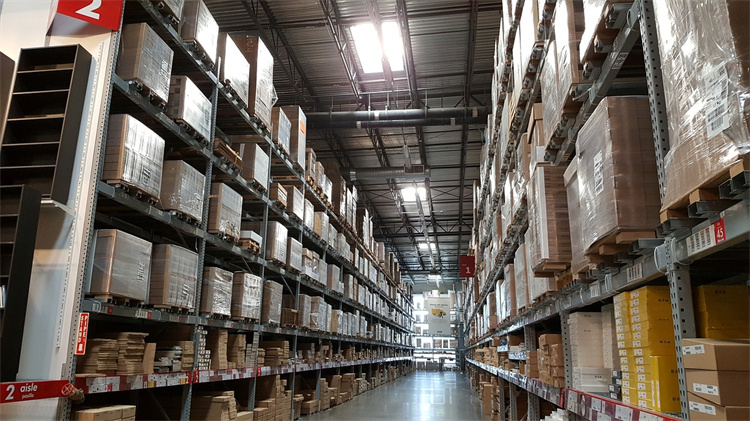Innovate Together: Enhancing Supplier Relationships in High-Tech Manufacturing

In high-tech manufacturing, the supplier relationships are the backbone of success. By fostering strong connections with key suppliers, companies can drive innovation and ensure quality. This blog explores essential strategies for enhancing these crucial partnerships. Through collaboration and a focus on continuous improvement, organizations can achieve sustainable growth in the dynamic landscape of high-tech manufacturing.
Building Supplier Relationships

When it comes to supplier relationships in high-tech manufacturing, the focus shifts towards establishing long-term collaborations that go beyond mere transactions. By integrating suppliers into business processes, companies can create a seamless flow of operations that benefit both parties involved. This integration allows for a deeper understanding of each other's needs and capabilities, paving the way for more effective partnerships.
In the realm of joint product development, collaboration takes center stage as companies and suppliers work hand in hand to innovate and create cutting-edge solutions. This joint effort not only enhances the quality of products but also fosters a sense of shared success and achievement. By leveraging the expertise of key suppliers, organizations can stay ahead of the curve and deliver innovative products that meet market demands.
Measuring performance is essential in ensuring that supplier relationships remain strong and mutually beneficial. Key Performance Indicators (KPIs) serve as benchmarks for evaluating supplier performance and identifying areas for improvement. By setting clear KPIs and regularly monitoring progress, companies can maintain transparency and accountability within their partnerships.
Continuous improvement is a core principle in building lasting supplier relationships. Through ongoing feedback mechanisms and collaborative problem-solving techniques, organizations can address challenges proactively and drive innovation. Embracing a culture of continuous improvement not only strengthens existing partnerships but also sets the foundation for future growth and success.
Effective Communication
Effective communication is the cornerstone of successful supplier relationships in high-tech manufacturing. By fostering clear and open lines of communication, companies can ensure that both parties are aligned in their goals and objectives. This section explores key strategies for enhancing communication with suppliers to drive collaboration and innovation.
Frequent Interactions
Regular Meetings
Regular meetings play a vital role in maintaining strong relationships with suppliers. These meetings provide a platform for discussing ongoing projects, addressing any challenges that may arise, and aligning on future objectives. By scheduling regular face-to-face meetings or virtual conferences, companies can foster a sense of partnership and collaboration with their suppliers.
Setting an agenda for each meeting ensures that discussions remain focused and productive.
Encouraging active participation from both sides promotes engagement and mutual understanding.
Following up on action items from previous meetings demonstrates commitment to progress and accountability.
Transparent Communication Channels
Transparent communication channels are essential for building trust and credibility with suppliers. By establishing clear channels for sharing information, companies can ensure that critical updates, feedback, and requests are communicated effectively. Transparency fosters a culture of openness and honesty, laying the foundation for long-term partnerships.
"Transparency is key to building strong relationships with our suppliers. By sharing relevant information openly, we create a collaborative environment where both parties can work towards shared goals." - Supplier Relationship Manager Interviewee
Utilizing digital platforms or project management tools streamlines communication processes.
Providing regular updates on project milestones or changes helps maintain alignment between partners.
Addressing any issues or concerns promptly demonstrates responsiveness and commitment to resolving challenges.
Problem-Solving
Collaborative Problem-Solving Techniques
Collaborative problem-solving is crucial for overcoming obstacles and driving continuous improvement in supplier relationships. By working together to identify root causes, develop solutions, and implement changes, companies can strengthen their partnerships with suppliers. Collaborative problem-solving fosters innovation and drives positive outcomes for all parties involved.
Brainstorming sessions involving cross-functional teams encourage diverse perspectives and creative solutions.
Implementing corrective actions based on joint problem analysis demonstrates a commitment to quality improvement.
Celebrating successful problem resolution reinforces the value of collaboration and teamwork.
Feedback Mechanisms
Feedback mechanisms are essential for gathering insights, identifying areas for improvement, and reinforcing positive behaviors in supplier relationships. By soliciting feedback from suppliers on a regular basis, companies can gain valuable perspectives that drive mutual growth and development. Feedback mechanisms promote a culture of continuous learning and improvement within partnerships.
"Feedback is a gift that helps us understand how we can better support our suppliers. By actively seeking feedback, we show our commitment to listening, learning, and evolving together." - Supplier Relationship Manager Interviewee
Conducting periodic surveys or assessments allows for structured feedback collection and analysis.
Implementing action plans based on feedback received demonstrates responsiveness to supplier needs.
Recognizing valuable feedback through acknowledgment or rewards encourages ongoing engagement and collaboration.
Collaboration and Innovation

Joint Innovation Efforts
In the realm of high-tech manufacturing, companies engage in joint innovation efforts to drive progress and stay ahead of the competition. By collaborating with key suppliers, organizations can leverage shared expertise and resources to co-develop new technologies that meet evolving market demands. This collaborative approach fosters a culture of innovation and accelerates the pace of product development.
Co-development of New Technologies
Companies that engage in co-development initiatives with suppliers benefit from shared research findings and access to databases of other industry players. This collaborative model enables organizations to tap into a wealth of knowledge and insights, leading to breakthrough innovations that set them apart in the market.
Leveraging the power of joint research, companies can explore new frontiers in technology and create solutions that address complex challenges. By pooling resources and expertise, partners can accelerate the pace of innovation and bring cutting-edge products to market faster than their competitors.
Sharing of Best Practices
Sharing best practices with suppliers is essential for driving continuous improvement and fostering a culture of excellence. By exchanging insights on quality standards, process efficiencies, and industry trends, companies can enhance their operations and deliver superior products to customers.
Collaborating on best practices also strengthens relationships between buyers and suppliers, laying the foundation for long-term partnerships based on mutual trust and respect. Recognizing the value of shared knowledge, organizations can build a competitive advantage that propels them towards sustained success in high-tech manufacturing.
Recognition and Rewards
Recognizing the contributions of suppliers is paramount in nurturing strong relationships built on trust and collaboration. In high-tech manufacturing, incentive programs play a crucial role in motivating suppliers to excel and innovate. By offering rewards for exceptional performance, companies reinforce a culture of excellence that drives continuous improvement across the supply chain.
Incentive Programs
Implementing incentive programs incentivizes suppliers to go above and beyond in delivering quality products and services. Whether through financial rewards or non-monetary incentives, recognizing outstanding performance encourages suppliers to strive for excellence and invest in long-term partnerships.
By aligning incentives with strategic goals, companies can ensure that supplier efforts are directed towards achieving shared objectives. Incentive programs not only boost supplier morale but also foster a sense of ownership and commitment to mutual success.
Celebrating Successes
Celebrating successes with suppliers is an opportunity to acknowledge achievements collectively and strengthen bonds within the partnership. Whether through awards ceremonies or public recognition, highlighting milestones reinforces positive behavior and motivates continued collaboration.
Recognizing supplier successes publicly also showcases the value of strong relationships in driving business outcomes. By celebrating joint accomplishments, organizations demonstrate their appreciation for supplier contributions while inspiring future innovation and collaboration opportunities.
Building robust supplier relationships is a strategic imperative for businesses aiming to sustain growth and expand into new markets.
Effective collaboration, continuous improvement, and transparent communication are essential pillars in enhancing supplier partnerships.
Embracing joint innovation efforts and recognizing supplier contributions through incentive programs drive mutual success and innovation.
Continuous improvement in supplier relationships leads to cost optimization, risk mitigation, and growth opportunities.
See Also
Efficient Strategies for Supply Chain Challenges in High-Tech Manufacturing
Unlocking Triumph: Demystifying High-Tech Manufacturing Consultation
The Path to Success in Manufacturing: Essential Strategies
Guiding Through Transformation: Embracing Technology in Supply Chains
Boosting Supply Chains through Cloud-Based Technological Innovations
